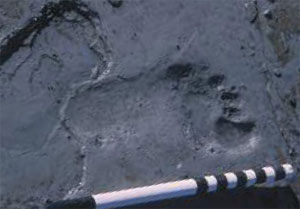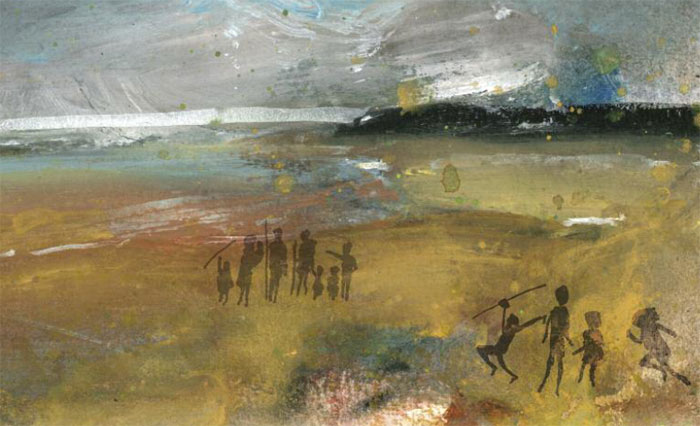
Archaeological excavations in the Severn Estuary by The University of Reading
in 2001
(Photo © RCAHMW Crown Copyright)
|

Goldcliff East, Severn Estuary – fingertip excavation of human footprints
across the Mesolithic land surface

Exceptionally well-preserved Mesolithic footprint from the same site
(Photos Eddie Sacre)
Tracks across a living landscape The work by The University of Birmingham has demonstrated the high potential that studying these lost lands has for gaining greater insights into the lives of our prehistoric ancestors. These areas were not mere bridging points or inhospitable habitats but living landscapes where people hunted, foraged, played and settled. A remarkably direct link to these people is provided by the preservation of their footprints at coastal sites such as Formby Point, in Northwest England, Goldcliff East on the Severn Estuary, and Lydstep, Pembrokeshire. Over 200 trails of human footprints, many dated to the late Mesolithic, have been recorded at Formby Point. Further Mesolithic family groups are apparent by their surviving footprint tracks at Goldcliff East, the earliest made some 7,500 years ago. A high proportion of children are evident, perhaps helping the adults forage for seafood and also playing. Animal footprints, including deer, aurochs, wolves and cranes have also been recorded. It appears that these people did not have a passive relationship with their environment. Shell middens or mounds, many including human remains, recorded along the Severn Estuary and at sites such as Prestatyn on Liverpool Bay suggest a long-term, often seasonal, exploitation of local resources. Environmental evidence indicates regular burning of woodland and areas of reed, although whether this was caused deliberately or not is still open to debate. In either case, it helped to create favorable habitat for grazing animals and to provide easier access to water. |

